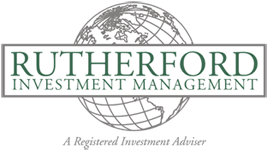Published August 8, 2025

July confounded investors with conflicting signals. Yet the S&P 500 rose 2.17 percent for the month, pushing its year-to-date return to 7.78 percent. The Dow Jones Industrial Average saw a modest gain of 0.08 percent, while the tech-heavy Nasdaq advanced steadily. In July, the S&P 500 managed its 14th record close for the year, highlighting investors’ continued optimism in the economy and their confidence that the Fed would eventually cut rates.
After the relentless climb in stock prices throughout July, on the first day of August, employment data sent a clear warning signal, and the market retreated over 3 percent from its recent highs. That day, the Bureau of Labor Statistics (BLS) reported that total nonfarm payroll employment increased by only 73,000 in July. The agency also significantly revised earlier figures downward; June’s payroll number was adjusted sharply downward from 147,000, while May’s total plummeted by 125,000 to just 19,000. In addition, the unemployment rate edged slightly upward from 4.1 to 4.2 percent, average weeks unemployed increased modestly to 24.1 — the highest level since April 2022 — and the number of long-term unemployed individuals rose to 1.82 million.
However, ADP’s subsequent employment report struck a more optimistic tone, stating that its hiring and pay data continue to be broadly indicative of a healthy economy, with strong job gains in leisure, financial, and construction sectors. Job losses were in health and education. ADP is a payroll processing firm that captures actual weekly payroll data for more than 25 million U.S. private-sector employees. The data suggests that the labor market may have underlying strength despite the recent BLS report, which has a much greater lag in its survey data results.
The Federal Reserve, in its July meeting just prior to the employment data reports being released, chose to hold rates steady. Fed Chair Jerome Powell maintained a hawkish tone despite pressure from the White House for rate cuts. Markets reacted negatively; the Dow Jones Industrial Average dropped more than 600 points following Powell’s comments, reflecting investors’ disappointment.
Powell’s dilemma is akin to threading a needle with boxing gloves — attempting to control stubborn inflation without pushing the economy into recession. Lowering rates too early risks reigniting inflation; acting too late could deepen an economic downturn.
Second-quarter GDP rose by 2.8 percent annualized, appearing healthy on the surface. However, a significant portion of that growth was due to a notable decline in imports, likely due to the tariff impacts. GDP calculations subtract imports from exports, meaning fewer imports artificially inflate GDP figures, even if domestic spending remains stagnant. It is like seeing your bank balance grow because you’ve stopped shopping — not because your income has increased.
Consumer spending, which accounts for roughly 70 percent of U.S. economic activity, grew at its slowest pace in over two years, rising at an annualized rate in the second quarter of just 1.4 percent. Strip away the impact of declining imports, and the underlying growth rate shrinks closer to 1 percent, aligning with Goldman Sachs’ cautious forecasts for the remainder of the year.
Tariff uncertainties intensified market volatility, particularly as the Aug. 1 tariff deadline approached. Investor sentiment cratered that day, as two fresh shocks landed simultaneously: the much weaker-than-expected July jobs report and the Trump administration’s unveiling of sweeping new tariffs — ranging from 10 percent to over 40 percent on imports from countries including Canada, India, Taiwan, and Brazil — slated to take effect Aug. 7. These broad-brush tariffs reignited fears of inflation pressure and global trade disruptions. Despite these challenges, corporate earnings thus far have continued to meet or exceed targets, suggesting underlying strength even amid political headwinds.
Markets have historically shown resilience through periods of uncertainty, and today’s landscape, which is marked by trade tensions, moderate employment growth, and a Federal Reserve carefully balancing inflation and full employment, is no different. While caution is warranted, it is equally important to remember the underlying strength and adaptability of the U.S. economy and the enormous amounts of global capital that must be deployed into financial assets, suggesting that patient investors can navigate these times successfully. Technology remains a driver of productivity, particularly through AI developments. Additionally, traditional sectors benefiting from reshoring and infrastructure spending should not be overlooked.
As we move into the often volatile late-summer and early fall months, investors should stay invested but be prepared for turbulence. Keep your portfolio balanced and your holdings diversified, emphasize quality investments across sectors, and maintain a clear view of your objectives. The music might change tempo, and the chairs might be pulled out from under you from time to time, but steady engagement remains the prudent choice for the long-term investor.
William Rutherford is the founder and portfolio manager of Portland-based Rutherford Investment Management. Contact him at 888-755-6546 or wrutherford@rutherfordinvestment.com. Information herein is from sources believed to be reliable, but accuracy and completeness cannot be guaranteed. Investment involves risk and may result in losses.
